The extraordinary story of a three-time cancer survivor

It was the final day of the nine-day festival venerating Goddess Durga. The day of victory of good over evil. Vijayadashami. A day when doorsteps are adorned with marigold flowers and vermillion-sprinkled white pumpkins to ward off the evil eye.
I received a call in the afternoon from my niece who usually never bothers with small talk over the phone. But I was expecting this call. Had been for the past week of that month in 2015. It was as I had dreaded. Her father had passed away.
It had been a year-long battle for him, and also for her. While his body tried to contain the malignancy with the periodic onslaught of chemo sessions, she had to break her fixed deposits and jewellery to feed the daily mounting costs of treatment. In the end, they had both lost the war to cancer.
He was now another statistic in the World Health Organisation’s (WHO) estimate that 8.2 million people die each year of cancer, making up 13 percent of all deaths worldwide.
The WHO predicts a 70-percent increase in new cases of cancer over the next two decades.
An all-pervasive adversary
There were times I sat in for her as her father underwent the chemotherapy sessions in a state-of-the-art hospital in Bengaluru. The hush in the chemo room would echo loudly in my ears as I surreptitiously watched relatives of other patients dart behind the starch white curtains of their cubicles. We would avoid any eye contact afraid that the “shame” will show.
With our face masks and white gowns meant to protect us and our loved ones from catching any infection, we would silently observe the chemical cocktail drip into their veins like a stealthy battalion of soldiers breaching a fort wall to capture the enemy.
But the adversary here is “formless, timeless, and pervasive” as oncologist Siddharth Mukherjee terms the disease in his epic biography of cancer, The Emperor of All Maladies. Describing a leukemia cell, Mukherjee writes, “The cells look bloated and grotesque, with a dilated nucleus and a thin rim of cytoplasm, the sign of a cell whose very soul has been co-opted to divide and to keep dividing with pathological, monomaniacal purpose… Normal cells are identically normal; malignant cells become unhappily malignant in unique ways.”
A story of resilience
Nine-hundred-and-eighty kilometres away in Mumbai, 37-year-old Shiraz Siddiqui’s cells had started revolting much like what Mukherjee describes. The year was 2013, and this was the third time that Shiraz had relapsed. The doctors were understandably worried. His blood cancer had travelled to the organs. They feared his body would not be able to withstand the aggressive chemotherapy that such a stage demands. Recalling his third relapse, Shiraz tells me,
“I was sitting on a time bomb that could explode anytime.”
In the past 10 days, Shiraz and I went back and forth, sometimes over the phone, and at other times when he was not feeling well, over e-mail, trying to piece together his incredible story of grit and endurance, and finally of hope.
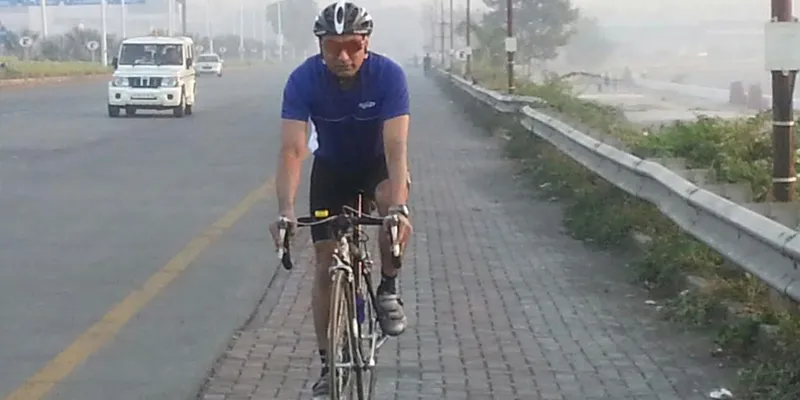
I was beside myself to understand how a man, who had been battling a life-threatening disease for 12 years, draws strength not only to fight his disease but at the same time run his fledgling startup even as he trains to run an ultra marathon. His fitness and infectious energy shine through as examples to emulate.
The first encounter
Shiraz was into sports since childhood and over the years had mastered martial arts as a Kung-fu Wushu practitioner. Since his fight with cancer began, he took to endurance sports with a vengeance. Over email, he answers my question on the source of his strength:
“You have to be very strong when you are at your weakest.”
In 2004, when Shiraz was 28, he was diagnosed with Acute Lymphocytic Leukemia (ALL), a rare kind of leukemia that starts from the white cells in the bone marrow. “I began experiencing cramps followed by low-grade fever,” Shiraz tells me. He was then working at The Marriott and visited the in-house doctors but the fever persisted. Where once he could easily run 40 km he was now finding even a 10-km run difficult to complete. “I was losing weight. It was three months and we could not figure out what was wrong with me.”
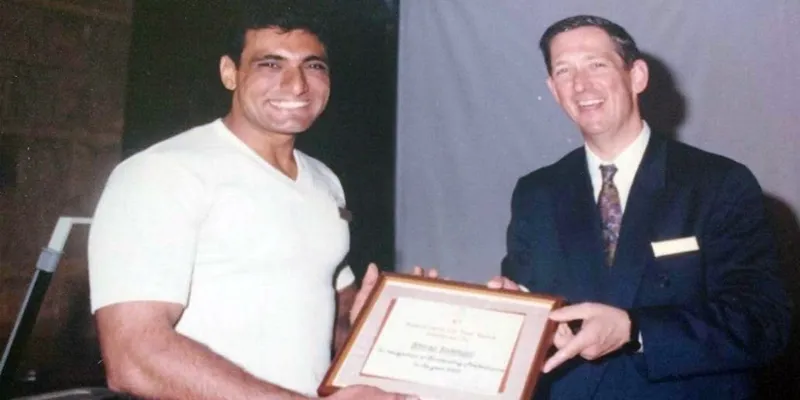
Terming those three months as the most painful period of his life, Shiraz says that finally after repeated blood tests when doctors zeroed in on cancer, he felt a sense of relief. A weight was lifted. He says, “I was relieved. At least now I knew the enemy I was up against.” He asked the doctors to give him a week’s time to research on the cost of treatment before they began his. “The only thing that worried me was the prohibitive cost of cancer treatment,” he adds.
With a boost of steroids and a warning to be back exactly after a week, Shiraz spent the next seven days doing probably the most difficult kind of mathematics ever. How to balance an equation of life and death?
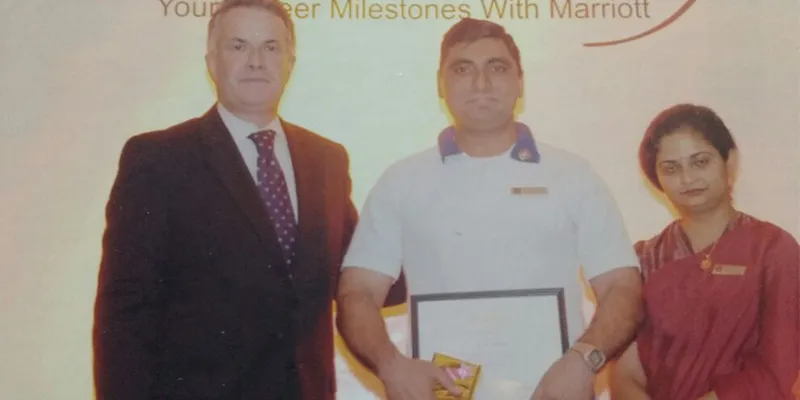
Before he was diagnosed, Shiraz’s mother had arranged for his marriage. “We called it off because it would not have been fair,” he says as a matter-of-fact. Could it be this pragmatic view of life that has helped him in his setbacks?
Marathoner of life
Shiraz responded well to the initial chemotherapy protocol, but exactly after four-and-a-half years since his treatment had begun, he had his first relapse in 2009. Doctors say if a person is in remission for five years, he is believed to have been cured. It must have felt like tripping a few yards before the finishing line and having to start the race all over again.
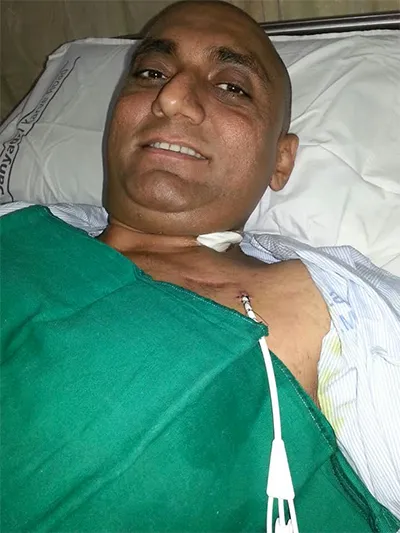
“Remember Forrest Gump’s lines, ‘Life’s like a box of chocolates. You never know what you’re gonna get.’ I too have learnt to take life as it comes. When I go to sleep I do not know what the next day will bring,”
he shares with me, revealing his emotional side only this one time in the entire interview when he talks about his favourite movie, Forrest Gump. “Last evening I was alright, but this morning I woke up with a 103-degree centigrade fever,” he says. But Shiraz admits that this does not stop him from looking into the future and catching himself planning life ahead.
He is a marathon man both on and off the field.
“Life’s like the four stages of a marathon,” he tells me. The first is the easy-going, energetic, and enthusiastic one; so is the first 10 km. There’s no hurt or pain. Yet. The second stage is becoming a professional and applying all your knowledge and focussing on calculated decisions. The second lap of a marathon (10-20 km) is like focussing on the goal and keeping the pace under control. “Keep in mind to avoid getting carried away by other people’s performance,” he cautions.
In the third stage, life is like moving ahead with responsibilities related to family, career, adjustments and goals to achieve. Here the runner starts feeling the hurt and pain. He still needs to continue to focus by using his skill and strategies to reach the finish line.
The last stage or the old age is when the person starts feeling insecure and dependent on others. “Wise decisions made earlier make it easy for a person to live the last stage with happiness and contentment. Similarly, the last 10 km start to demand your mental power, courage, and will to finish the race strong. The last lap is full of hurt and pain; still the runner fights all the odds to reach the finish line.” He concludes with a flourish,
“Any physically fit person can be at the start line but only a mentally fit athlete will reach the finish line.”
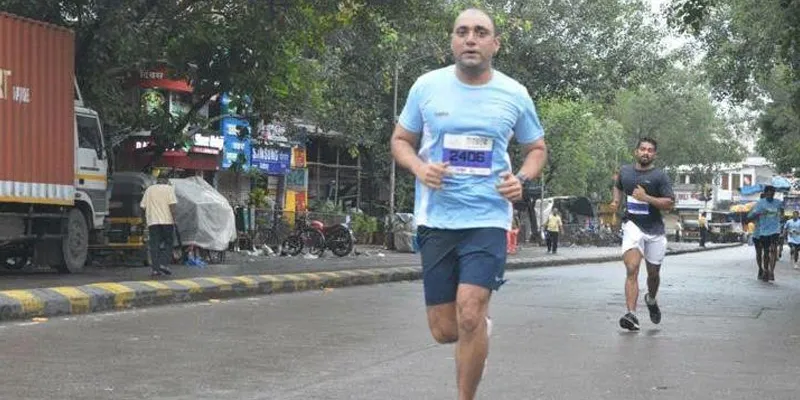
Debilitating cost for cure
In 2010, Shiraz registered a company that focussed on wellness and fitness. “I quit my job during my treatment. I realised the only way I could have a source of income was if I shared my skills in health and fitness. I could be reliant if I transferred my learnings to others,” he tells me.
In 2015, the company evolved into his new startup called The Gene Box that he started with his friend and Co-founder Pranav Anam. “Shiraz is one of the most inspiring people you can meet in your life. His journey hasn’t been easy, but then again, I have never seen someone fight harder. He is witty, extremely humble, and a rare gem. It’s been a privilege to have him on our side,” Pranav tells me.
When the second relapse occurred in 2013, doctors were worried. It was indeed a ticking bomb. They advised a bone marrow transplant.
Shiraz didn't get a full-matched sibling for the bone marrow transplant. He finally got a haplo-identical match for a high-risk Matched Unrelated Donor (MUD) Transplant.
While searching for a right match, they went through all the registries. To acquire a bone marrow match from the New York Registry it costs around Rs 45-50 lakh, while from the Indian registry, it costs around Rs 5-6 lakh. The cost of a transplant is around Rs 20-30 lakh, and the cost of post-transplant medication to avoid GvHD (Graft versus Host Disease) for more than two years comes to around Rs 15-20 lakh.
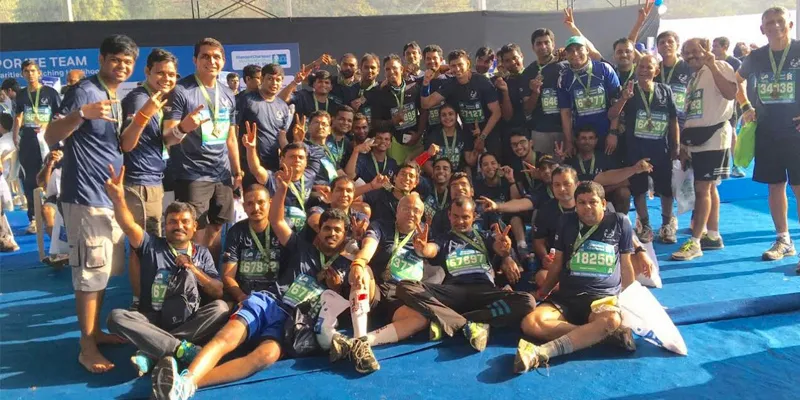
Shiraz did not disclose the cost of his treatment but says that his friends, relatives, and well-wishers were with him always giving him moral support. Shiraz lives with his mother in Mumbai and has an older brother who lives in the US.
Is there a drug called positivity?
During our interview, Shiraz has been in and out of the hospital. He is in the last stages of the treatment getting his vaccinations again. Since the transplant, his blood group has changed from A positive to O positive. In 2017, Shiraz will complete three years since his transplant. Last year, on his birthday on Sept 15, he cycled indoors non-stop for 100 km. “Right now, I am at the peak of my fitness,” he says. He started indoor cycling as he was barred from going outside to prevent any infection. He has also started his running.
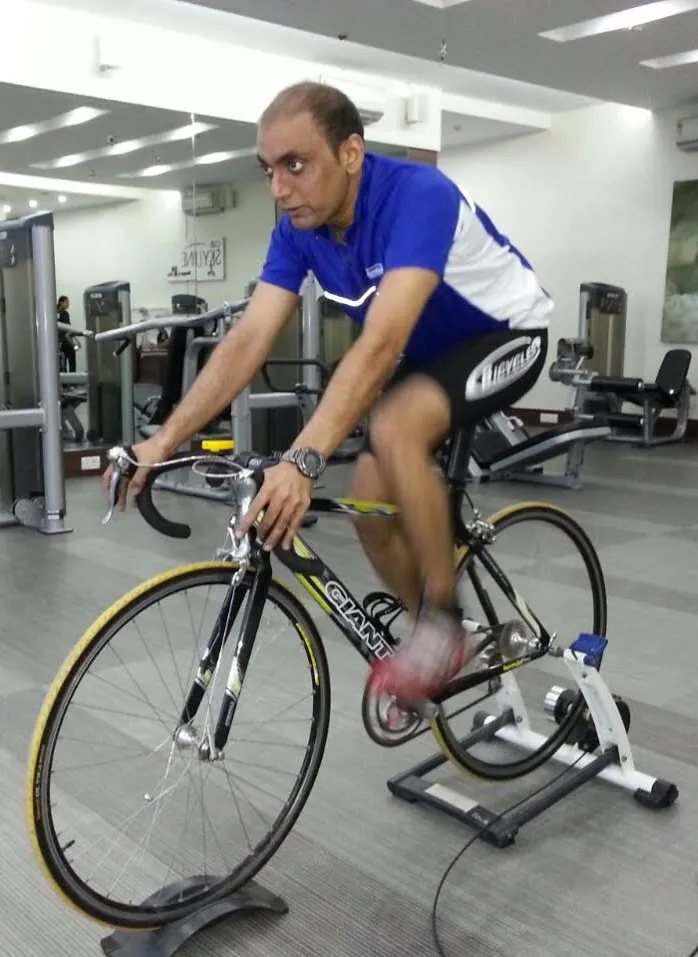
A question that is often the cause of heated debates is whether a positive mental attitude can cure cancer. In her book, The Human Side of Cancer, Living with Hope, Coping with Uncertainty, doctor Jimmie Holland coined the term “the tyranny of positive thinking” to describe this philosophy.
Mukherjee expressed somewhat similar views in an interview with The Guardian. “I think it does a nasty disservice to patients. A woman with breast cancer already has her plate full, and you want to go and tell her that the reason you're not getting better is because you're not thinking positively? Put yourself in that woman's position and think what it feels like to be told your attitude is to blame for why you're not getting better. I think it's nasty.”
The nature of the disease and society’s attitude towards those suffering from cancer has created a smoke screen leaving patients and their families to figure out their own way through this difficult journey.
Shiraz often counsels other patients like him and tells them to first start by accepting the fact that they have cancer. "Do not live in denial. Being a sportsperson first, I have developed a mindset where I give my best and hope it takes me to the finish line,” he says, adding,
“A positive spirit can help you cope with the disease.”
And that’s something to bear in mind to avoid the pitfalls in the positive thinking theory. Whether or not a positive mental state can cure cancer, but it certainly can help someone cope with it.
Calling cancer, the defining plague of our generation, Mukherjee writes, “… my ultimate aim [in the book] is to raise a question beyond biography: Is cancer’s end conceivable in the future? Is it possible to eradicate this disease from our bodies and societies forever?"
A question that 12.7 million people with cancer and their families wake up every morning asking.







